When I first started out, every brewer told me: ‘Buy in your grain, buy in your malt – it’s cheaper.’ But I thought there might be a difference (in flavour) if we grew our own.”
Maurice Deasy brews beer at Canvas Brewery, which is located on his family farm near Aglish, Co Tipperary. At one time, they grew malting barley for larger entities. Now? They are growing heritage crops for their own purposes.
“I remember, I was baling straw and listening to the radio,” he says. “Grainne (from Metalman Brewery in Waterford) was on talking about craft beer. This was maybe eight years ago? Maybe more.
“I was listening and thought, ‘That sounds like fun’,” he continues. “And then I was like – we used to grow malting barley, why don’t we make it into beer?”
Farming realities
From a young age, Maurice had a clear understanding of what his father, Ruaidhrí, was up against. He remembers the struggle against buyers who weren’t offering a fair price for their output. He has since felt that farmers’ voices – even within a large, organised group – often go unheard.
“Farmers are working more land than ever before, but probably making less than they ever have. I wanted to get out of that cycle, but how would we do it? By brewing our grain into beer and selling it directly to customers, where we can negotiate a fair price for our products.”
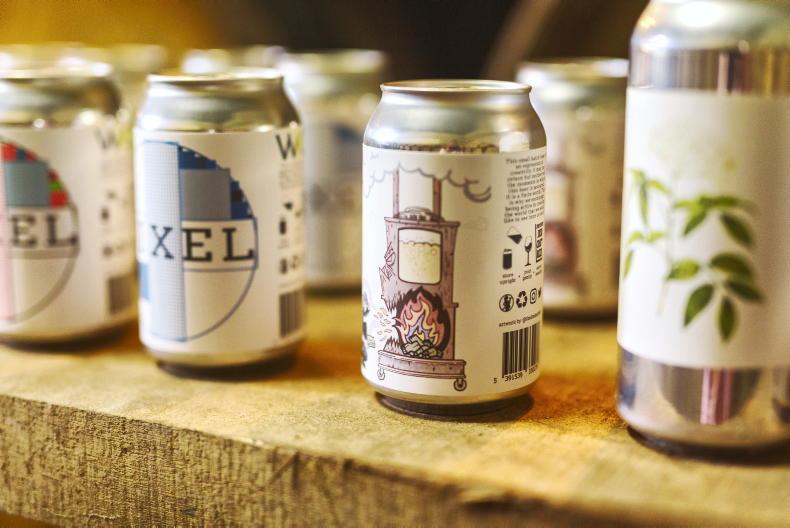
Maurice also flavours some of his beers with seasonal ingredients, like pine in his pioneer pale ale. \ Claire Nash
Maurice and his father have since delved into regenerative farming techniques. Before purchasing inputs, they look at their land and examine how they can use what they already have to not just farm, but make their beer.
If you ask, Maurice will tell you they are “far from being certified organic”, though they have greatly reduced the amount of chemical inputs on their land. Much of their beer is made from barley, hops and water from their own land. Some are even made with “wild yeast” (a similar process to how a sourdough bread starter is made), which is naturally occurring in the air.
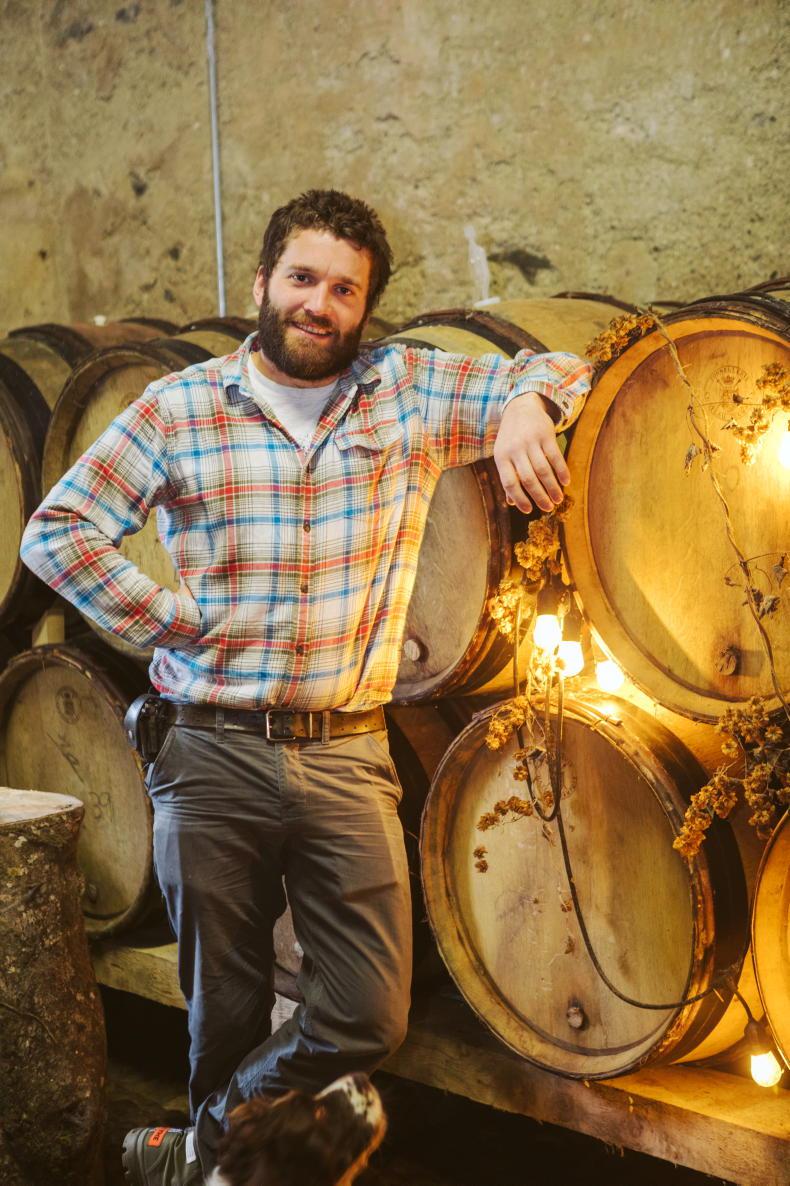
His beers are aged and fermented in oak barrels, sourced from France. \ Claire Nash
“We would be unique, certainly in Ireland, in sourcing our own grain, water, hops and energy to produce our beer,” he says
Practises
Maurice lights up when he shows me “Mad Max”: the wood-fired boil kettle he built for brewing his beer. He uses timber, which is sourced from his family’s patch of native woodland, as fuel for both Mad Max and his malt kiln, which he also built. With a PhD in mechanical engineering, building is clearly another passion of his.
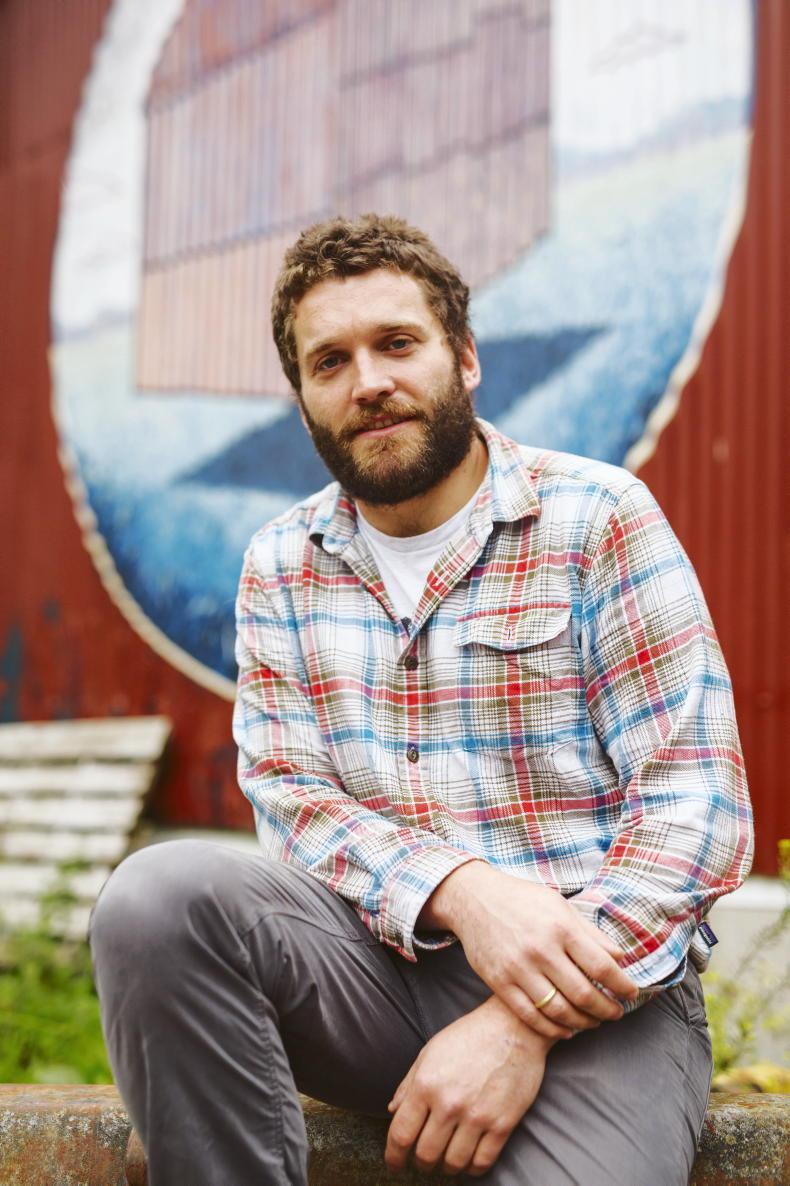
Maurice spent time in Belgium growing up and was influenced by their farmhouse brewery culture. \ Claire Nash
“People would argue: is biomass (burning wood) sustainable? And my answer would be yes,” he says. “Is all biomass sustainable? That depends. We harvest, store, and burn it all here – and then we grow it back. In our native woodland, we leave 20% of the canopy alone. We let the seeds fall from the old trees. Then, for the wood, we don’t kill the trees – we coppice them, so they’ll put up shoots again. It’s like cutting the grass; we keep the roots alive.”
Heritage grain
Because Maurice and his father grow grain specifically for their beer, they have the freedom to experiment with their crops. Maurice is particularly interested in growing heritage malting barley and wheat (they are currently growing and developing several varieties).
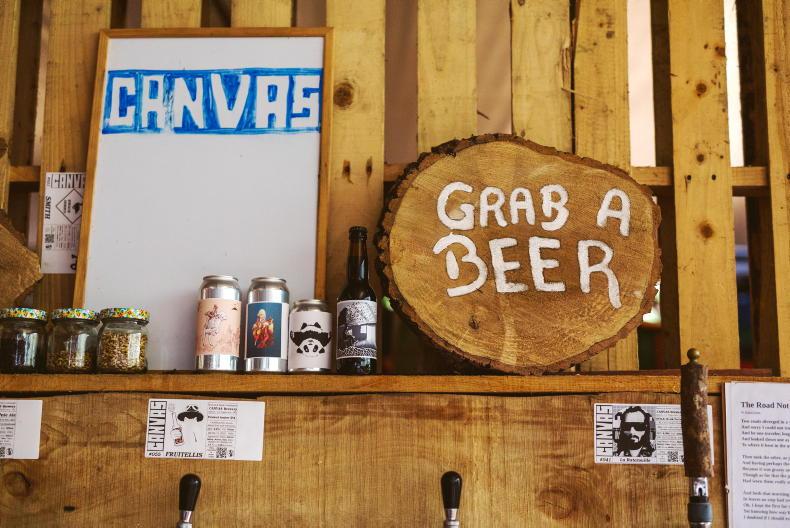
In normal times, Maurice's shed is sometimes used for gatherings and farm walks. \ Claire Nash
Heritage grains are said to be more resilient to disease and climate change, thanks to their deeper root systems. However, lower yield and their physical size can cause issues for farmers and Maurice admits they are still learning about how the different types of grain grow on their land. They now use a conventional direct drilling method for sowing their crops instead of ploughing, which Maurice says saves time and fuel, lowers input costs and is better for ensuring soil health.

Maurice poses with some of his grains and his dog, Pip. \ Claire Nash
“I would eventually like to go completely regenerative and produce high-quality, nutrient-rich [heritage] grain,” he says. “Fundamentally, though, no merchant would ever pay for it because grain is a commodity. Because we’re malting and brewing it, we can take control and say, ‘OK, let’s grow a heritage crop which has more flavour, even if the yield is lower.’
“As a brewer, the flavour would be worth any loss in yield,” he adds.
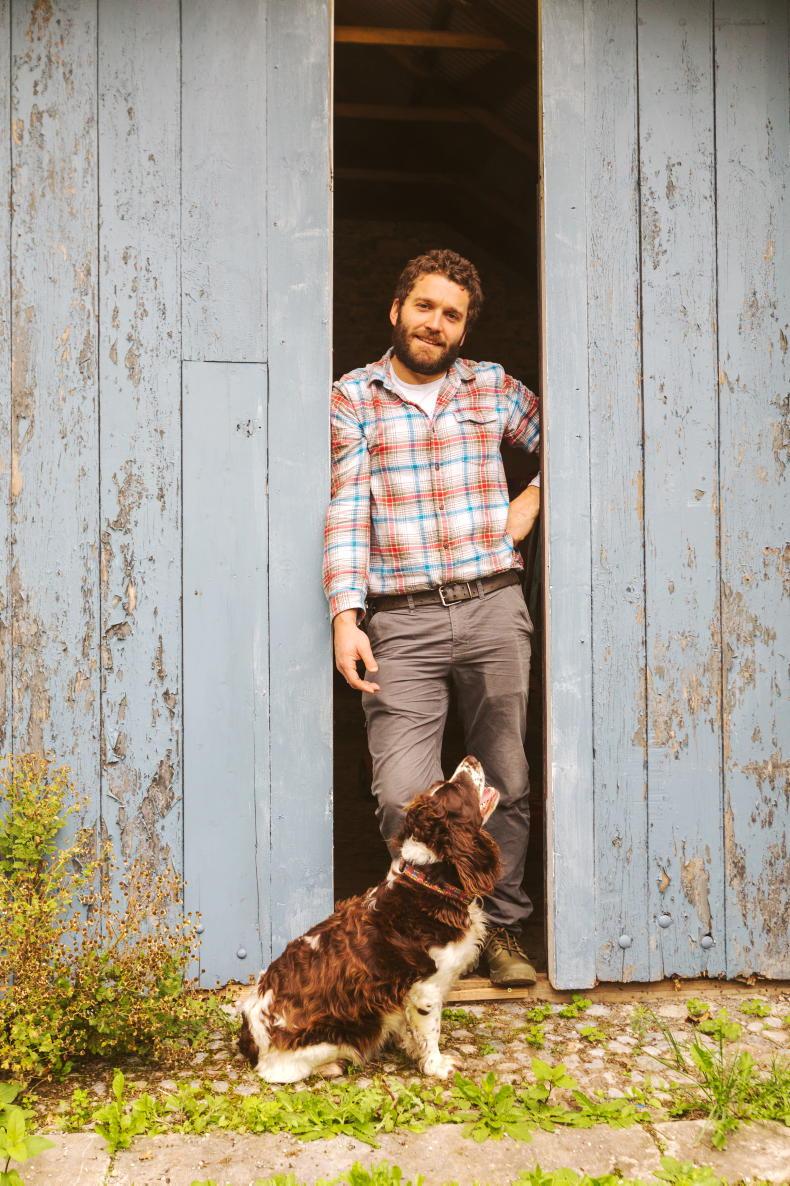
Maurice and his dog, Pip. \ Claire Nash
Consistently inconsistent
Any sourdough bread maker will tell you it’s impossible to produce a consistent loaf of bread when you combine heritage grains with natural fermentation – there are simply too many variables involved in the process. It’s the same with beer made with heritage grain. Eating seasonally – something we are constantly told we should do – can mean celebrating these inconsistencies. Maurice would like to bring this concept to beer-drinking.
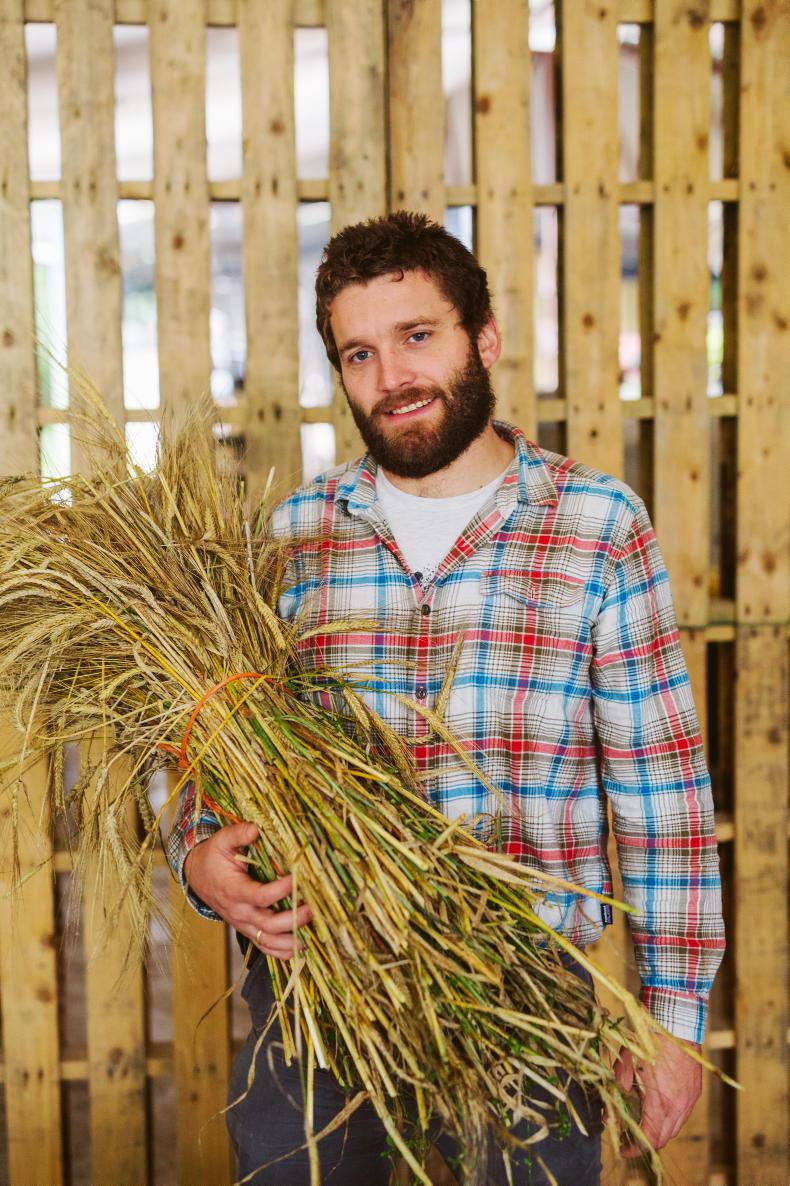
Maurice is impressed with heritage grains and says so far they have proven disease resistant. \ Claire Nash
“The idea is not to look for uniformity; it’s to explore differences,” he says. “If you want uniformity, there’s already a lot of that on the market. If you want an experience, that’s what we’re trying to do.
“We accept [vintages] in grapes; every bottle of wine includes the year it was produced,” he continues.
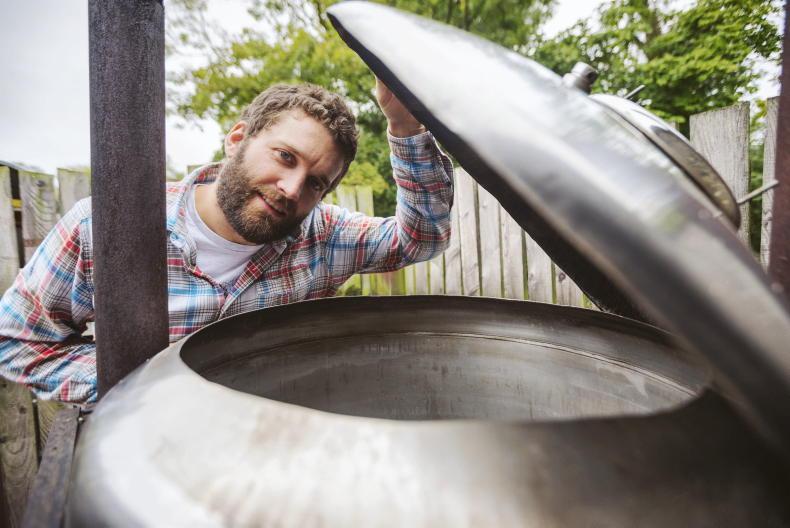
Mad Max is the boiler Maurice built to make his beer. \ Claire Nash
“People don’t expect the same wine from year to year, even if it’s from the same winery. With [heritage] grain for beer? Each year’s grain is different; each year has slightly different characteristics. My goal would be to have the year that particular crop was grown on each bottle of our beer.”
Saison brewery
Canvas Brewery is a farmhouse brewery in the truest sense, but in actuality, you could call it a saison brewery. This is a type of seasonal farmhouse brewery, which originated in Belgium. Maurice’s mother is Belgian and her children spent plenty of time there during their youth, so it comes as no surprise that Maurice’s beer would include some Belgian influence.
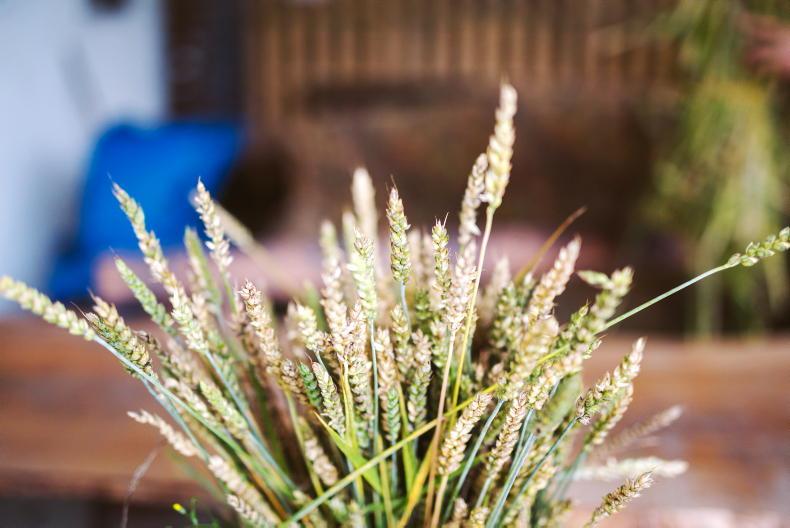
Just as we accept vintages in wine, Maurice feels we should accept them in beer; since each year's heritage crop will have different characteristics. \ Claire Nash
“We brew seasonally,” he says. “When the harvest is on, I don’t brew – because I’m on a tractor. Originally, saison breweries were farmhouse breweries because they needed something to employ the workers when they weren’t working the fields. That’s really, in essence, what this is. It’s a way of diversifying the farm.”
Seed sovereignty
Maurice and his father are currently saving seeds from their heritage grain crops. Maurice says there are several reasons he wanted to start saving seeds – from the different flavours imparted in his beers, to being able to share knowledge with other farmers and making his crops more resilient.
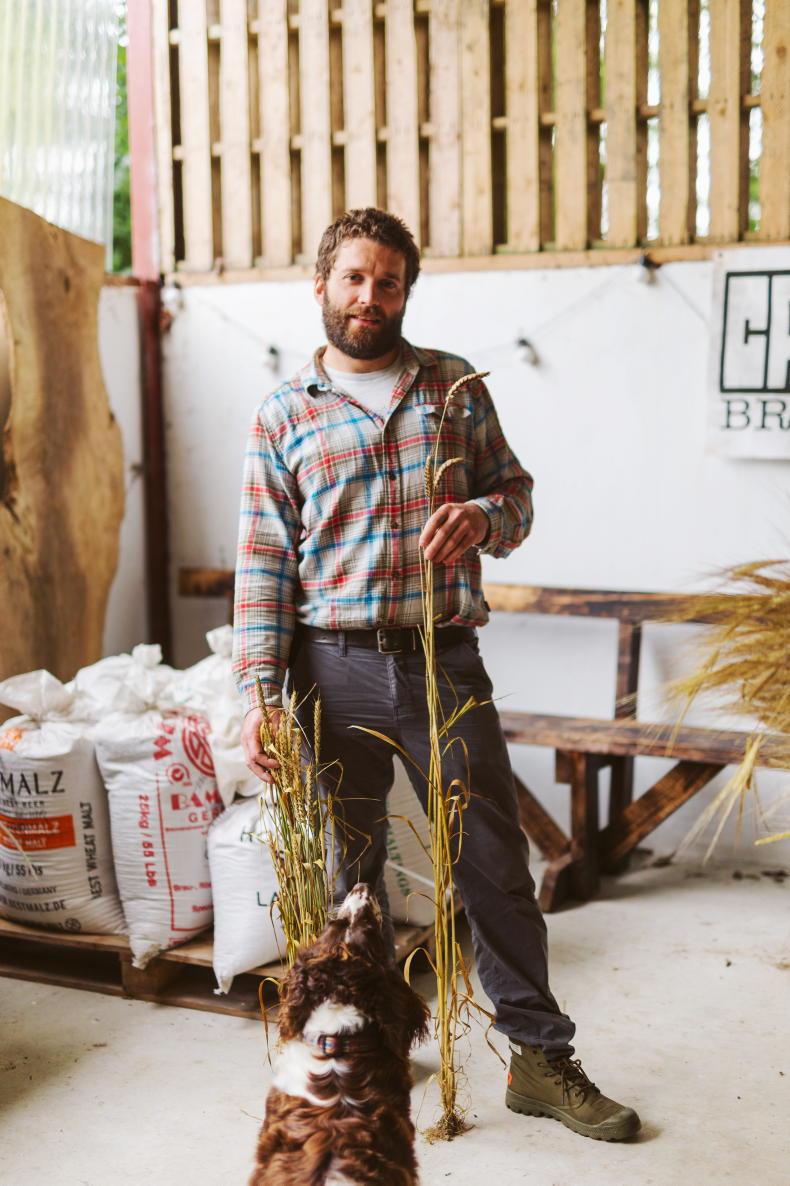
Maurice Deasy owns and operates Canvas Brewery on his farm in North Tipperary. \ Claire Nash
“I’d love to expand our community understanding of farming and this is where the seed sovereignty comes in,” he says. “To me, seed sovereignty means the ability to freely save your own seeds to grow them again. When you think back to some heritage grains, they go back thousands of years and that’s how they developed.
“Historically, seed-saving was community building – if my own seeds failed, then meitheal (the Irish word for a co-operative labour system) would kick in: my neighbour would share some with me,” he continues.
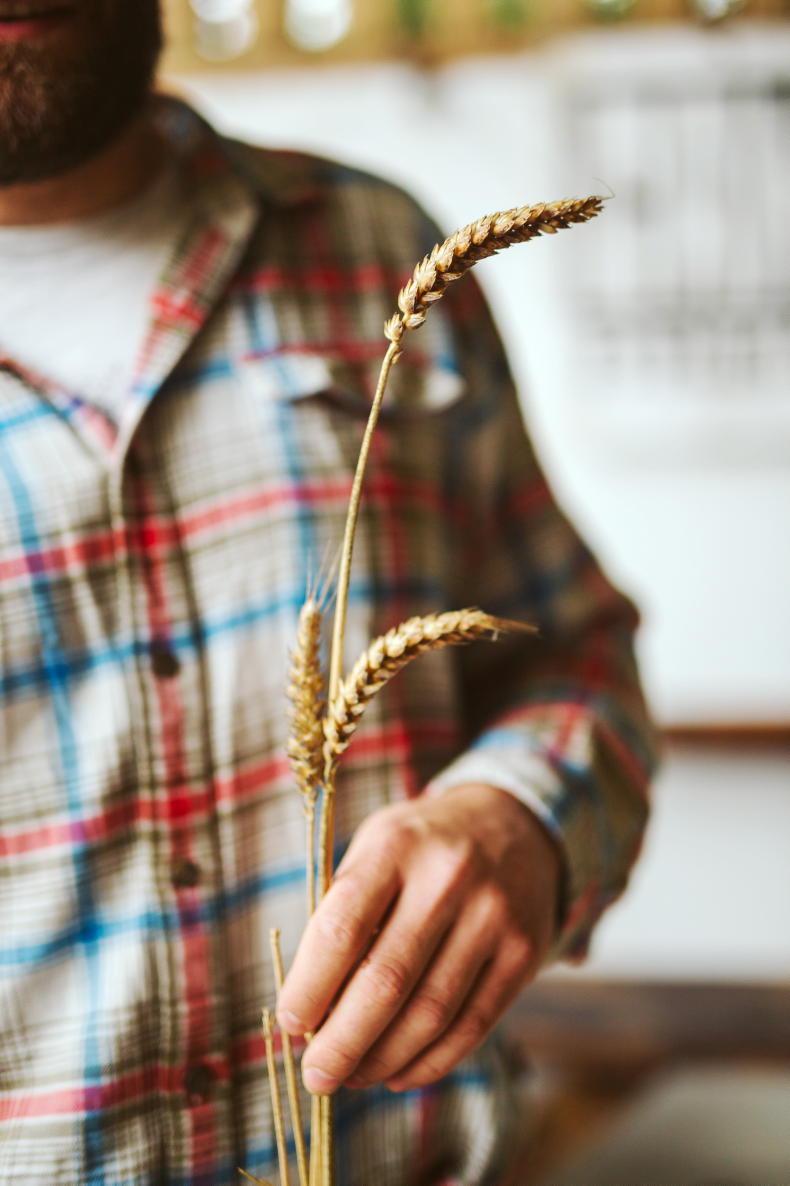
Chefs and food lovers are increasingly aware of the flavours, character and possible environmental benefits heritage grains provide and are willing to pay more for them. \ Claire Nash
“I come from a science background. I think we have made huge improvements to agriculture through science, but I think we should combine it with our old culture, which was one of sharing, diversity and resilience.”
Making a population
Maurice plans to start growing heritage grain “populations”, which means he will plant multiple varieties of barley or wheat together in one field. The idea is, eventually, the crop will adapt to his particular climate.
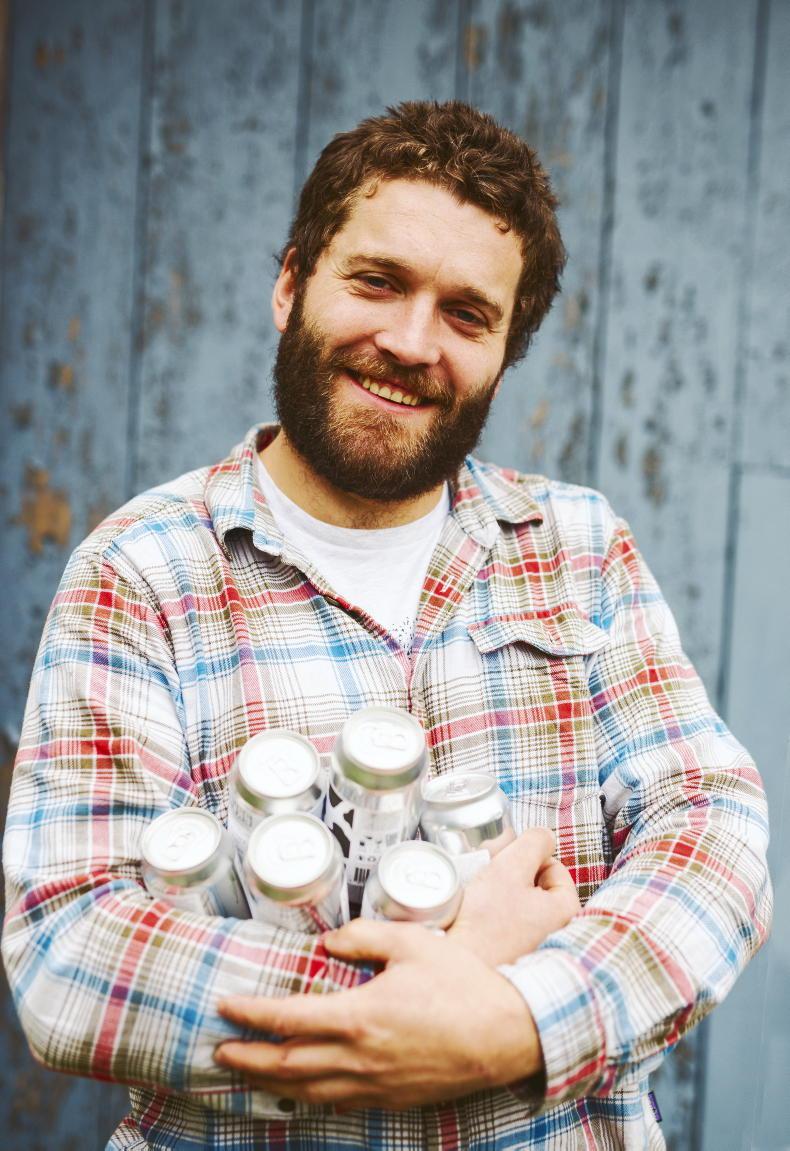
Maurice makes several styles of beer at the moment, but says they will constantly change as their methods, grain and recipes change. \ Claire Nash
Developing a grain “population” takes years; the ideal end result being a disease-resistant crop with lots of genetic diversity. While he is within the guidelines from the Department of Agriculture for saving his own seeds, there are restrictions on sharing those population seeds with other farmers.
“Disease spreading is a huge issue and our only real defence is through genetic diversity,” he explains.
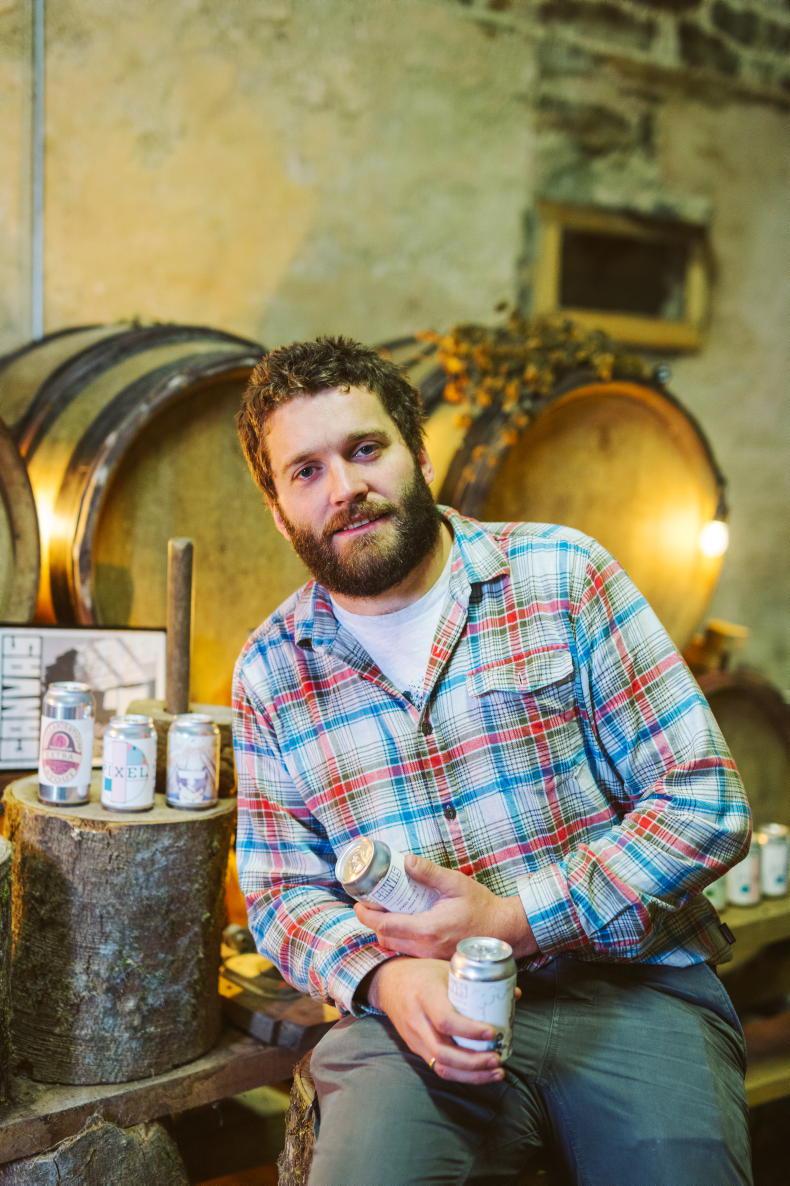
Maurice would like to create a brewery where people can come and purchase their beer on-site. \ Claire Nash
“This takes time, but by being a brewery and using our own grain, we can start to learn these things. That’s why we offer a variety of beers, and also why the beers will always change – not only will we change our recipes, but the grains – the soul of the beer - will be changing as our soils and techniques change.”
The future
While his current license does not allow for him to sell beer directly from his farm, Maurice would like to get to a place where customers can collect their own beer. Currently, you can order online and have it delivered, either through a specific order or as part of their monthly beer subscription programme.
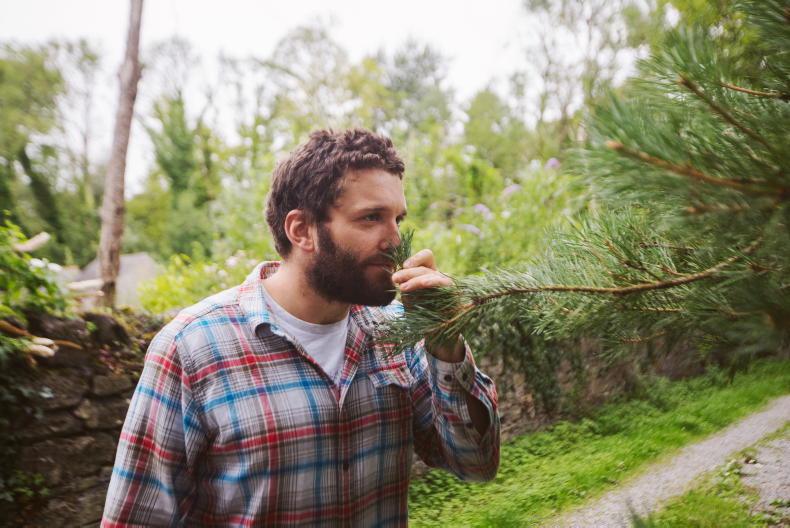
Their native woodland provides the fuel for making their beer. \ Claire Nash
His aim is to build a resilient food community and increase his regenerative farming practises, though he admits he won’t be able to continue on this path if it isn’t financially sustainable.
“I am careful when I talk about heritage grains and all of these other things – because of course there are flaws,” he says. “There were flaws historically, [which is why conventional farming has become the norm]. I have to be cognisant of my dad having built this farm up. I can’t go in thinking I’m going to save the world and then go out of business. But together with my dad, we’ve been making small changes and are seeing better yields.”
The Forge
Before I leave, Maurice draws my attention to a Seamus Heaney poem on the wall of his shed. It’s The Forge, and the words have inspired him along his unconventional path to business and farming.
He leans out on the jamb, recalls a clatter
Of hoofs where traffic is flashing in rows;
Then grunts and goes in, with a slam and a flick
To beat real iron out, to work the bellows
“He talks of the blacksmith hitting the iron and he sees the modern world flashing past – and he turns around. Am I looking at the modern world and doing something similar – rejecting it, in a way?” he muses.
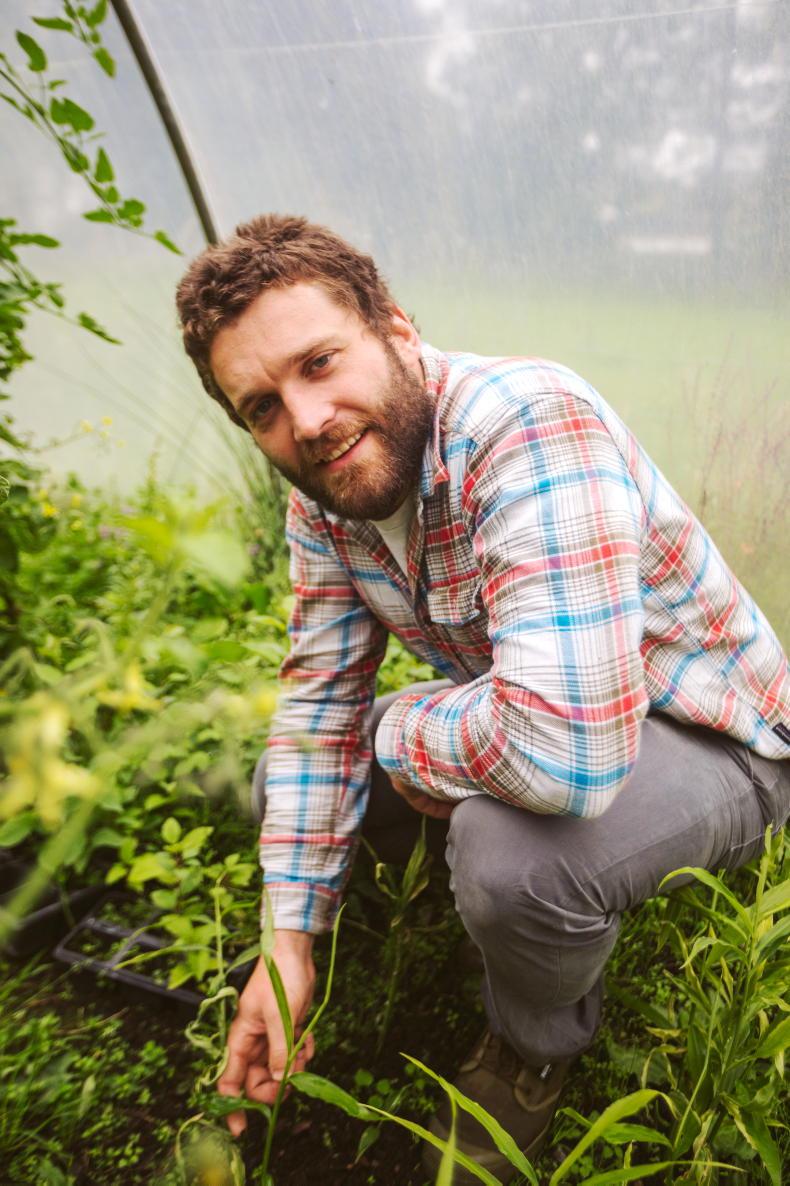
They sustainably manage their woodland. \ Claire Nash
“I’m not saying we need to go back to a tonne to the acre (that’s not going to pay the bills), but by combining modern science with older methods, maybe we can recover [some of] the things we’ve lost.”
See canvasbrewery.com for more info
Read more
Should Irish farmers grow hemp?
In conversion: new organic entrants diary
When I first started out, every brewer told me: ‘Buy in your grain, buy in your malt – it’s cheaper.’ But I thought there might be a difference (in flavour) if we grew our own.”
Maurice Deasy brews beer at Canvas Brewery, which is located on his family farm near Aglish, Co Tipperary. At one time, they grew malting barley for larger entities. Now? They are growing heritage crops for their own purposes.
“I remember, I was baling straw and listening to the radio,” he says. “Grainne (from Metalman Brewery in Waterford) was on talking about craft beer. This was maybe eight years ago? Maybe more.
“I was listening and thought, ‘That sounds like fun’,” he continues. “And then I was like – we used to grow malting barley, why don’t we make it into beer?”
Farming realities
From a young age, Maurice had a clear understanding of what his father, Ruaidhrí, was up against. He remembers the struggle against buyers who weren’t offering a fair price for their output. He has since felt that farmers’ voices – even within a large, organised group – often go unheard.
“Farmers are working more land than ever before, but probably making less than they ever have. I wanted to get out of that cycle, but how would we do it? By brewing our grain into beer and selling it directly to customers, where we can negotiate a fair price for our products.”

Maurice also flavours some of his beers with seasonal ingredients, like pine in his pioneer pale ale. \ Claire Nash
Maurice and his father have since delved into regenerative farming techniques. Before purchasing inputs, they look at their land and examine how they can use what they already have to not just farm, but make their beer.
If you ask, Maurice will tell you they are “far from being certified organic”, though they have greatly reduced the amount of chemical inputs on their land. Much of their beer is made from barley, hops and water from their own land. Some are even made with “wild yeast” (a similar process to how a sourdough bread starter is made), which is naturally occurring in the air.

His beers are aged and fermented in oak barrels, sourced from France. \ Claire Nash
“We would be unique, certainly in Ireland, in sourcing our own grain, water, hops and energy to produce our beer,” he says
Practises
Maurice lights up when he shows me “Mad Max”: the wood-fired boil kettle he built for brewing his beer. He uses timber, which is sourced from his family’s patch of native woodland, as fuel for both Mad Max and his malt kiln, which he also built. With a PhD in mechanical engineering, building is clearly another passion of his.

Maurice spent time in Belgium growing up and was influenced by their farmhouse brewery culture. \ Claire Nash
“People would argue: is biomass (burning wood) sustainable? And my answer would be yes,” he says. “Is all biomass sustainable? That depends. We harvest, store, and burn it all here – and then we grow it back. In our native woodland, we leave 20% of the canopy alone. We let the seeds fall from the old trees. Then, for the wood, we don’t kill the trees – we coppice them, so they’ll put up shoots again. It’s like cutting the grass; we keep the roots alive.”
Heritage grain
Because Maurice and his father grow grain specifically for their beer, they have the freedom to experiment with their crops. Maurice is particularly interested in growing heritage malting barley and wheat (they are currently growing and developing several varieties).

In normal times, Maurice's shed is sometimes used for gatherings and farm walks. \ Claire Nash
Heritage grains are said to be more resilient to disease and climate change, thanks to their deeper root systems. However, lower yield and their physical size can cause issues for farmers and Maurice admits they are still learning about how the different types of grain grow on their land. They now use a conventional direct drilling method for sowing their crops instead of ploughing, which Maurice says saves time and fuel, lowers input costs and is better for ensuring soil health.

Maurice poses with some of his grains and his dog, Pip. \ Claire Nash
“I would eventually like to go completely regenerative and produce high-quality, nutrient-rich [heritage] grain,” he says. “Fundamentally, though, no merchant would ever pay for it because grain is a commodity. Because we’re malting and brewing it, we can take control and say, ‘OK, let’s grow a heritage crop which has more flavour, even if the yield is lower.’
“As a brewer, the flavour would be worth any loss in yield,” he adds.

Maurice and his dog, Pip. \ Claire Nash
Consistently inconsistent
Any sourdough bread maker will tell you it’s impossible to produce a consistent loaf of bread when you combine heritage grains with natural fermentation – there are simply too many variables involved in the process. It’s the same with beer made with heritage grain. Eating seasonally – something we are constantly told we should do – can mean celebrating these inconsistencies. Maurice would like to bring this concept to beer-drinking.

Maurice is impressed with heritage grains and says so far they have proven disease resistant. \ Claire Nash
“The idea is not to look for uniformity; it’s to explore differences,” he says. “If you want uniformity, there’s already a lot of that on the market. If you want an experience, that’s what we’re trying to do.
“We accept [vintages] in grapes; every bottle of wine includes the year it was produced,” he continues.

Mad Max is the boiler Maurice built to make his beer. \ Claire Nash
“People don’t expect the same wine from year to year, even if it’s from the same winery. With [heritage] grain for beer? Each year’s grain is different; each year has slightly different characteristics. My goal would be to have the year that particular crop was grown on each bottle of our beer.”
Saison brewery
Canvas Brewery is a farmhouse brewery in the truest sense, but in actuality, you could call it a saison brewery. This is a type of seasonal farmhouse brewery, which originated in Belgium. Maurice’s mother is Belgian and her children spent plenty of time there during their youth, so it comes as no surprise that Maurice’s beer would include some Belgian influence.

Just as we accept vintages in wine, Maurice feels we should accept them in beer; since each year's heritage crop will have different characteristics. \ Claire Nash
“We brew seasonally,” he says. “When the harvest is on, I don’t brew – because I’m on a tractor. Originally, saison breweries were farmhouse breweries because they needed something to employ the workers when they weren’t working the fields. That’s really, in essence, what this is. It’s a way of diversifying the farm.”
Seed sovereignty
Maurice and his father are currently saving seeds from their heritage grain crops. Maurice says there are several reasons he wanted to start saving seeds – from the different flavours imparted in his beers, to being able to share knowledge with other farmers and making his crops more resilient.

Maurice Deasy owns and operates Canvas Brewery on his farm in North Tipperary. \ Claire Nash
“I’d love to expand our community understanding of farming and this is where the seed sovereignty comes in,” he says. “To me, seed sovereignty means the ability to freely save your own seeds to grow them again. When you think back to some heritage grains, they go back thousands of years and that’s how they developed.
“Historically, seed-saving was community building – if my own seeds failed, then meitheal (the Irish word for a co-operative labour system) would kick in: my neighbour would share some with me,” he continues.

Chefs and food lovers are increasingly aware of the flavours, character and possible environmental benefits heritage grains provide and are willing to pay more for them. \ Claire Nash
“I come from a science background. I think we have made huge improvements to agriculture through science, but I think we should combine it with our old culture, which was one of sharing, diversity and resilience.”
Making a population
Maurice plans to start growing heritage grain “populations”, which means he will plant multiple varieties of barley or wheat together in one field. The idea is, eventually, the crop will adapt to his particular climate.

Maurice makes several styles of beer at the moment, but says they will constantly change as their methods, grain and recipes change. \ Claire Nash
Developing a grain “population” takes years; the ideal end result being a disease-resistant crop with lots of genetic diversity. While he is within the guidelines from the Department of Agriculture for saving his own seeds, there are restrictions on sharing those population seeds with other farmers.
“Disease spreading is a huge issue and our only real defence is through genetic diversity,” he explains.

Maurice would like to create a brewery where people can come and purchase their beer on-site. \ Claire Nash
“This takes time, but by being a brewery and using our own grain, we can start to learn these things. That’s why we offer a variety of beers, and also why the beers will always change – not only will we change our recipes, but the grains – the soul of the beer - will be changing as our soils and techniques change.”
The future
While his current license does not allow for him to sell beer directly from his farm, Maurice would like to get to a place where customers can collect their own beer. Currently, you can order online and have it delivered, either through a specific order or as part of their monthly beer subscription programme.

Their native woodland provides the fuel for making their beer. \ Claire Nash
His aim is to build a resilient food community and increase his regenerative farming practises, though he admits he won’t be able to continue on this path if it isn’t financially sustainable.
“I am careful when I talk about heritage grains and all of these other things – because of course there are flaws,” he says. “There were flaws historically, [which is why conventional farming has become the norm]. I have to be cognisant of my dad having built this farm up. I can’t go in thinking I’m going to save the world and then go out of business. But together with my dad, we’ve been making small changes and are seeing better yields.”
The Forge
Before I leave, Maurice draws my attention to a Seamus Heaney poem on the wall of his shed. It’s The Forge, and the words have inspired him along his unconventional path to business and farming.
He leans out on the jamb, recalls a clatter
Of hoofs where traffic is flashing in rows;
Then grunts and goes in, with a slam and a flick
To beat real iron out, to work the bellows
“He talks of the blacksmith hitting the iron and he sees the modern world flashing past – and he turns around. Am I looking at the modern world and doing something similar – rejecting it, in a way?” he muses.

They sustainably manage their woodland. \ Claire Nash
“I’m not saying we need to go back to a tonne to the acre (that’s not going to pay the bills), but by combining modern science with older methods, maybe we can recover [some of] the things we’ve lost.”
See canvasbrewery.com for more info
Read more
Should Irish farmers grow hemp?
In conversion: new organic entrants diary



















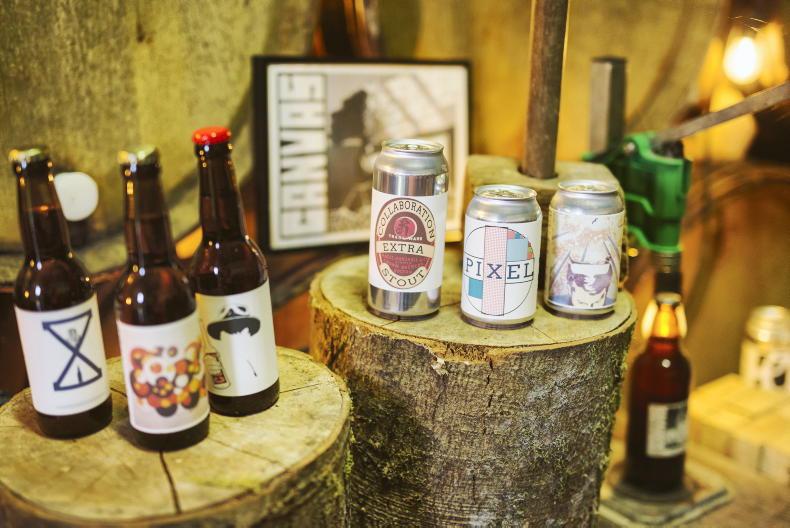
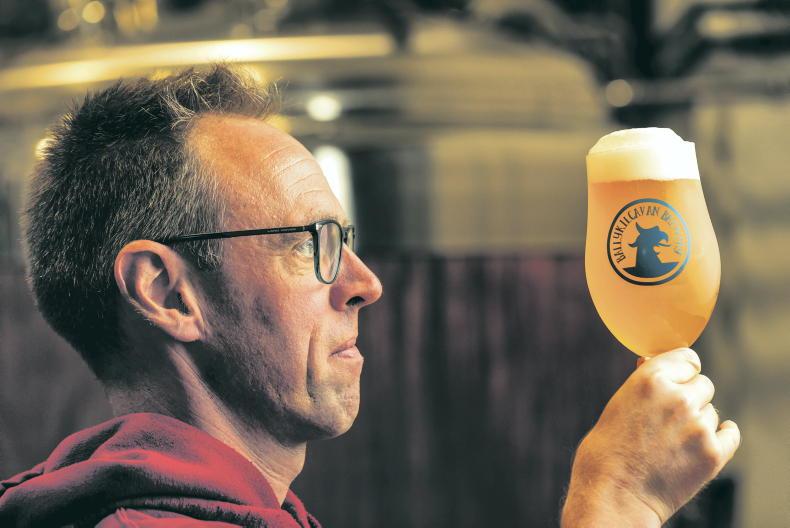

![George Lamb: ‘we have to find the sweet spot [in agriculture]’](https://s3-eu-west-1.amazonaws.com/ifj/WEBFILES/000/867/584/2372033-867584.jpg)

SHARING OPTIONS